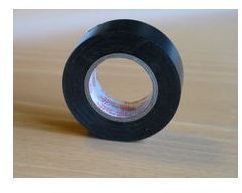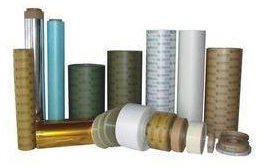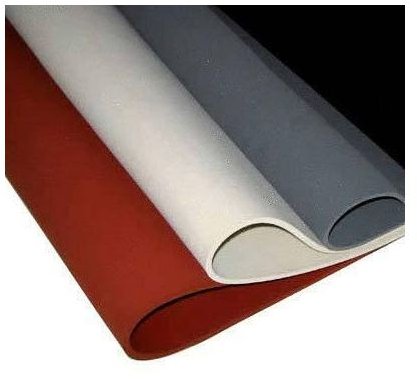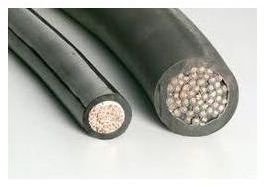Standard Insulating Materials Used in Electrical Engineering.
A material that responds with very high resistance to the flow of electrical current or totally resists electric current is called an insulating material. In insulating materials, the valence electrons are tightly bonded to their atoms.
In the electrical field, the purpose of any insulating material is to separate electrical conductors without passing current through it. Material like PVC, glass, asbestos, rigid laminate, varnish, resin, paper, Teflon, and rubber are very good electrical insulators. Insulating material is used as a protective coating on electrical wire and cables.
The most significant insulating material is air. Beside that solid, liquid, and gaseous type of insulators are also used in electrical systems.
Why electrical insulation is required
Electrical shock caused by the flow of current through the human body can result in physiological effects raging from fatal injuries resulted by involuntary moments to death from ventricular fibrillation (the rhythmic pumping action of the heart ceases) or muscular contraction.
DC voltage up to 40 volts and AC voltage up to 60 volts are considered safe limits, in the best circumstances, for the human body, but beyond this is consider a hazard, and to prevent it electrical insulation is required. Resistance to the electrical current is measured in ohms. Metals react with very little resistance to the flow of electrical current and are called conductors. As previously mentioned, materials like asbestos, porcelain, PVC, dry wood react with a high resistance to flow of electrical current and are called insulators.
Dry wood contains a high resistance, but when wet with water, its resistance drops and it may allow electricity. The same thing is applicable for human skin. When skin is dry, it has a high resistance to electric current, but when it is moist, there is a drop in resistance. Therefore any electrician should take precautions when water is present in the environment or on the skin and necessary insulating materials should be used. The best remedy to safeguard individuals from electrically energized wires and parts is through insulation.
Application of insulating materials
Cables and transmission lines:
Insulating material is generally used as a protective coating on electrical conductor and cables. Cable cores which touch each other should be separated and insulated by means of insulation coating on each core, e.g. polyethylene, cross linked polyethylene-XLPE, polyvinyl chloride-PVC, Teflon, silicone etc. Hanging disk insulators (bushings) are used in high voltage transmission bare cables where they are supported by electrical poles. Bushings are made from glass, porcelain, or composite polymer materials.
Electronics systems:
All electronic appliances and instruments widely contain PCB (printed circuit boards) having different electronics components on them. PCBs are manufactured of epoxy plastic and fiberglass. All electronics components are fixed on the insulated PCB board. In SCR (semiconductor rectifiers), transistors and integrated circuits, the silicon material is used as a conductive material and can be converted into insulators using a heat and oxygen process.
Power systems:
Transformer oil is widely used as an insulator to prevent arcing in transformers, stabilizers, circuit breakers, etc. The insulating oil can withstand insulating properties up to a specified electrical breakdown voltage. Vacuum, gas (sulfur hexafluoride), and ceramic or glass wire are other methods of insulation in high voltage systems. Small transformers, power generators, and electrical motors contain insulation on the wire coils by the means of polymer varnish. Fiberglass insulating tape is also used as a winding coil separator.
Domestic portable appliances:
All hand held electrical appliances are insulated to prevent their user from electrical shock hazard.
- Class 1 insulation contains only basic insulation on the wire and the metal body is earthed at the main grounding system. The third pin on the power plug shall be for the grounding connection.
- Class 2 insulation denotes a device with “double insulation.” All internal electrical components shall be totally enclosed within an insulated body which will prevent any shorting with conductive parts.
Electrical cable insulating tape:

PVC tapes are widely used to insulate electrical wires and other live conductive parts. It is made of vinyl as it stretches well and provides effective and long-lasting insulation. Electrical tape for class H insulation is made of fiberglass cloth.

Personal protective equipment:
PPE protects humans from the hazards of shock with electrical circuits. PPE such as insulating head protection, eye and face protection, and insulating gloves are necessary for protection against all common electrical hazards. Insulated tools and protective shields are must for an electrician’s safe working. Dielectric shoes (non-metallic safety footwear) or electrical hazard footwear is made with non-conductive, electrical shock-resistant soles and heels.
Electrical rubber mats:

Insulating mats for electrical purposes have a wide application in various substations, power plants, etc. The mats are used for floor covering below control panels to provide for the safety of workman due to any possible leakage of current.
List of some common insulating materials
- A.B.S.
- ACETATE
- ACRYLIC
- BERYLLIUM OXIDE
- CERAMIC
- DELRIN
- EPOXY/FIBERGLASS
- GLASS
- KAPTON
- KYNAR
- LEXAN
- MERLON
- MELAMINE
- MICA
- NEOPRENE
- NOMEX
- NYLON
- P.E.T. (Polyethylene terephthalate)
- PHENOLICS
- POLYESTER (MYLAR)
- POLYOLEFINS
- POLYSTYRENE
- POLYURETHANE
- PVC (Polyvinylcloride)
- SILICONE/FIBERGLASS
- SILICONE RUBBER
- TFE (TEFLON)
- THERMOPLASTICS
- ELECTRICAL INSULATING PAPERS, TAPES, and FOAMS
- NEOPRENE
- POLYSTYRENE
- POLYURETHANE
- SILICONE
- VINYL
- LAMINATES
Electrical Insulating Material Standards
ASTM’s insulating material standards are instrumental in specifying, evaluating, and testing the electrical and physical properties of materials used primarily as electrical insulation in devices and related equipment. These properties include dielectric breakdown voltage, dielectric strength, AC loss, permittivity (dielectric constant), DC resistance and conductance, dissipation factor, ion exchange capacity, ionic resistivity, and other physical properties. These electrical insulating material standards allow manufacturers, particularly those in the semiconductor industry, to examine and asses such materials and equipment to ensure their qualification for safe use.
Conclusion:
The control of electrical hazards is an important part of every safety and health program. A complete knowledge of insulating materials and standards for safe working practice is required for an electrician. Everyone has the right to work in a safe environment.
References
- Author’s own experience
- ASTM D1711 - 11a Standard Terminology Relating to Electrical Insulation
